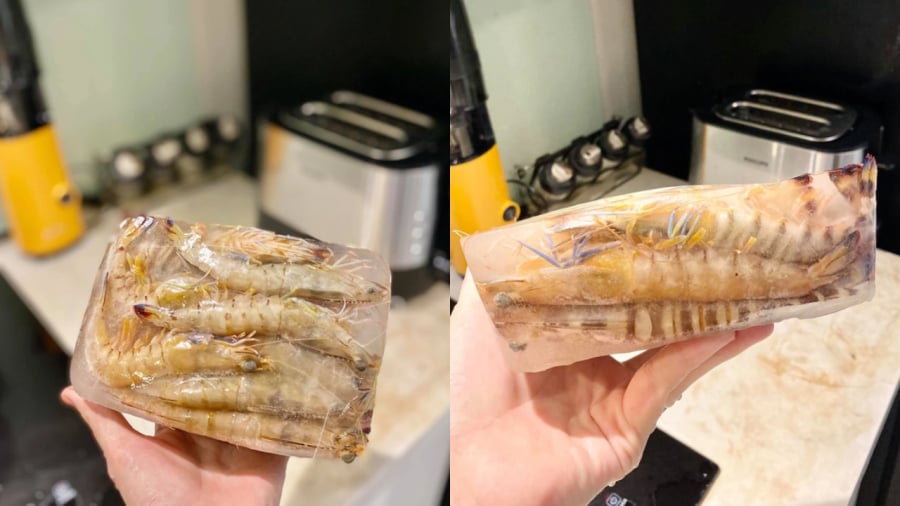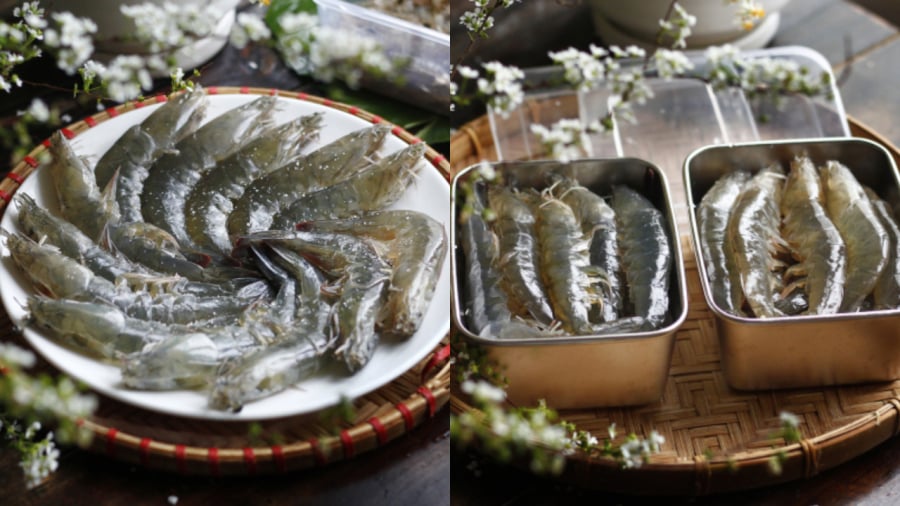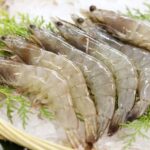Shrimp is a nutritious food that can be prepared in a variety of delicious ways. Many people like to buy shrimp in bulk and freeze it for later use. One common method of freezing shrimp is to place it in a container with water and freeze it. However, this approach has a drawback as it takes a significant amount of time to completely defrost the shrimp due to the formation of large blocks of ice.

This method of freezing shrimp with ice water has the disadvantage of lengthy thawing time.
To overcome this issue, consider adopting a more efficient approach to freezing shrimp.
Selecting the Best Shrimp
Start by purchasing the freshest shrimp available. Look for shrimp that is still swimming, with clear, glossy shells. When pressed, the flesh should feel firm, and the head and body should be securely attached. Ideally, the shrimp should have intact antennae, legs, and claws, and the head should not be discolored.
Avoid shrimp that appears soft, has a detached head, or emits an unusual odor.
Freezing Shrimp
Before freezing, remove the shrimp’s antennae, the vein along its back, and the waste bag located at its head. These parts tend to harbor bacteria and dirt. Additionally, during freezing, the shrimp’s hard shell can slow down the cooling process, causing the inner flesh to freeze more slowly. This can result in enzyme breakdown within the shrimp’s digestive system and intestines, leading to discoloration and a strong fishy odor.
Rinse the shrimp with ice-cold water to ensure cleanliness and maintain its freshness, then pat it dry.
Once the shrimp is prepared, ensure it is completely dry, either by air-drying or by blotting it with a clean cloth.
Next, marinate the shrimp in a small amount of cold beer or white wine, adding a little sugar and mixing well. The alcohol in the beer or wine helps sterilize and remove any fishy odor from the shrimp, while the sugar acts as a preservative, preventing the shrimp from drying out. Sugar also doesn’t dissolve at low temperatures, which keeps the shrimp from sticking together in chunks, making the thawing process easier.

Freezing shrimp with sugar helps prevent dryness and facilitates quicker thawing.
Divide the shrimp into small portions, placing each portion into separate containers or bags, ensuring that each container holds enough shrimp for a single meal. Seal the containers tightly and place them in the freezer. You can also use vacuum-sealed bags to prevent freezer burn.
Avoid overcrowding shrimp in a single large container, as it will prolong the freezing process and make thawing more difficult.
With this method, you can enjoy fresh, tasty shrimp all year round without worrying about dryness or discoloration.
Thawing Shrimp
When you’re ready to cook, transfer the shrimp from the freezer to the refrigerator several hours or even a day in advance. If you’re short on time, simply soak the frozen shrimp in cold water for a few minutes to quickly defrost it.
It’s important to cook thawed shrimp as soon as possible and avoid refreezing it.
How to Make Delicious and Easy Bánh Bột Lọc with Shrimp and Pork at Home
Bánh bột lọc is a beloved dish, renowned for its robust flavor profile and generous use of familiar spices. The allure of this dish lies in its delicate balance of textures and flavors, captivating the palates of many. With a simple preparation using tapioca starch, this delectable treat is accessible to all, promising an irresistible culinary experience. Let’s embark on a journey to uncover the simplicity behind this exquisite delight.



































